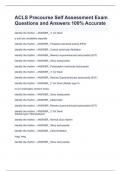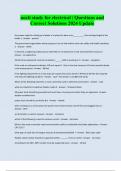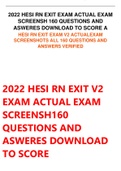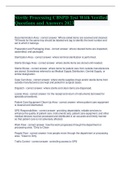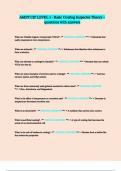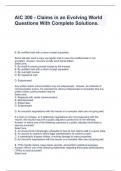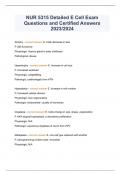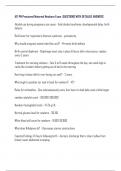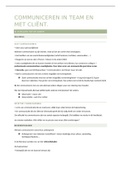Exam (elaborations)
ACLS Precourse Self Assessment Exam Questions and Answers 100% Accurate
- Course
- Institution
p and qrs completely separate Identify the rhythm. - ANSWER_ Pulseless electrical activity (PEA) Identify the rhythm. - ANSWER_ Coarse ventricular fibrillation Identify the rhythm. - ANSWER_ Reentry supraventricualr tachycardia (SVT) Identify the rhythm. - ANSWER_ Sinus bradycardia I...
[Show more]
